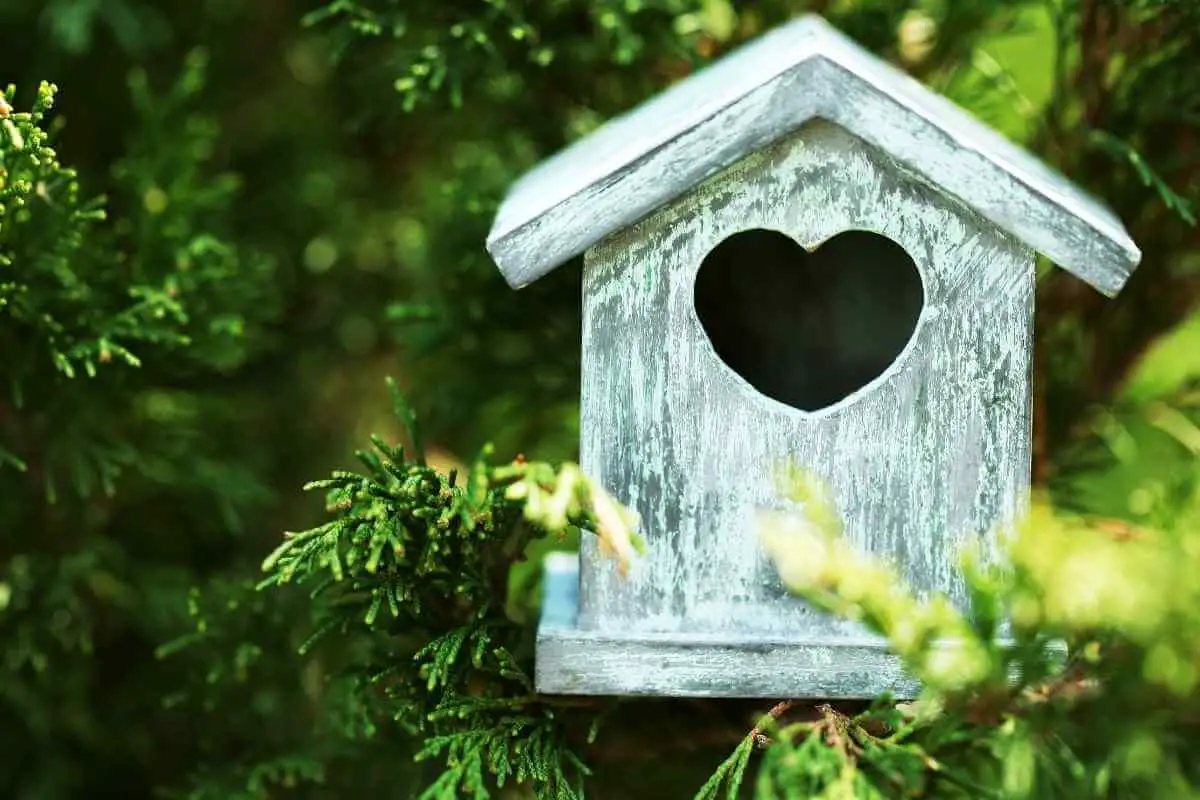If you are looking to build a bird nesting box for your garden, you might be wondering how to go about this.
After all, a nest box must be big enough for the birds to get in and out of and comfortably nest within, so how do you ensure that this is the case if you are designing it yourself?
Building a bird box is a fantastic project, and if you are keen to try, you should find it fairly easy even if you are not an expert in DIY. However, there are a few things that you need to pay attention to, like the size of the entry hole and the box dimensions. If you aren’t careful, birds won’t be able to get into it!
What Size Should a Nest Box Be?
The nest box size will obviously depend to a degree on the kind of bird that you want to attract to it.
If you wish to attract large birds such as pigeons or corvids, you will need a larger nest box.
This article will assume that you wish to attract small birds such as blue tits and great tits.
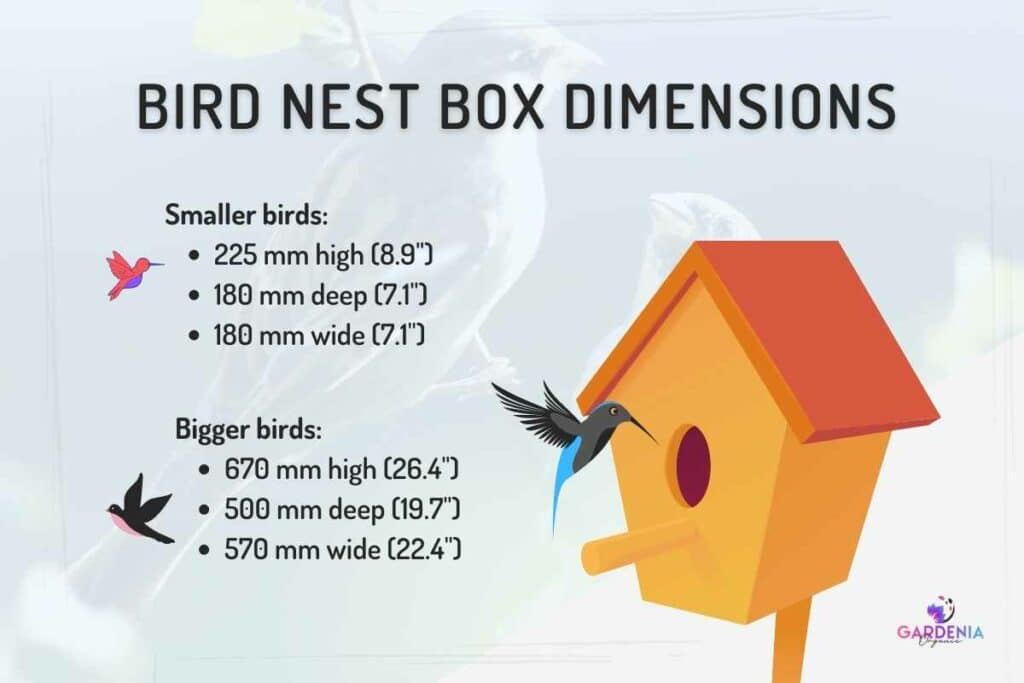
It is a good idea to check the different dimensions for different kinds of birds, but the main box can stay around the same size for most little birds (robins, tits, nuthatches, sparrows, etc.).
You will need to scale the size of the hole at the front up or down to suit different kinds of birds. We will cover the specific hole sizes later in this article.
The size of a nest box will also depend on the size of brood that the bird typically has.
As a rough guide, boxes should be around:
- 225 mm high
- 180 mm deep
- and 180 mm wide
This will give most small birds enough space to build a cozy nest for their young and rear them successfully without overcrowding issues.
If you are building a nest box for larger birds, such as barn owls, you will of course need a significantly bigger box to ensure that they have enough room inside.

Something like 670 mm high by 570 mm wide and 500 mm deep should be sufficient, and the hole should be 400 mm high.
Of course, the bigger the bird, the larger the box it will need, and the bigger its chicks will be.
There is no “one size fits all” bird nest box on the market, and the nest box size will vary massively from species to species.
Do not just go for a standard size, but take the time to understand the species that you are building for, their natural nest sites, and what they will need.
You may find the below information useful, although it does not cover all kinds of birds:
- Wren: 200 high by 200 wide by 180 deep.
- Tawny Owl: 770 high by 220 wide by 410 deep.
- Robin and Spotted Flycatcher: 200 high by 200 wide by 180 deep.
- Tree Sparrow: 210 high by 150 wide by 150 deep.
- Blackbird: 180 high by 300 wide by 150 deep.
- Jackdaw: 410 high by 200 wide by 200 deep.
- Nuthatch: 230 high by 190 wide by 190 deep.
- Kestrel: 340 high by 300 wide by 520 deep.
You should use plywood that is at least 15 mm thick, because this prevents the box from warping.
It also provides insulation from heat and cold, keeping the chicks safe from extreme weather. It should help your bird box to last well for year after year, without cracking or rotting.
Don’t ignore the nest box size; it is very important!
How Big Should The Hole at The Front of a Nest Box Be?
The hole is one of the most important things to think about when it comes to your nest box.
That is because different kinds of birds need different hole sizes, and most prefer to have a hole that they only just fit through.
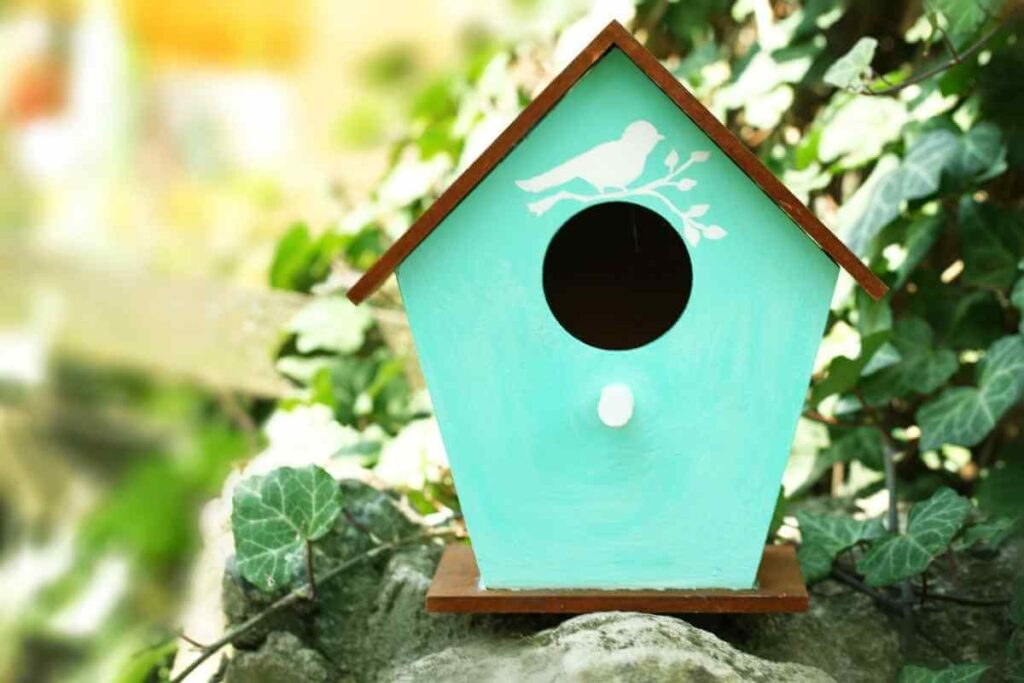
This prevents predators from following them into the box and makes them feel safer about using it as a nesting space for vulnerable chicks.
So, what size should you use?
If you aren’t sure what kind of birds you are hoping to attract, the generic size for small nesting birds is a 32 mm hole.
You can use a standard 32 mm drill bit to create this, and it should work well for most garden birds that might be looking to use a nest box.
However, if you want to make sure your nest box is right for a specific kind of bird, consider the following:
- Robins like open fronted nest boxes, hidden in vegetation. They will do best with a wide, open front, rather than a hole. You can put a piece of wood across the front of the box to secure it and keep eggs in, but leave the upper half of the front open.
- Blue tits like a hole around 25 mm, which is generally the smallest hole used in nest boxes. This allows the birds to slip inside, but no predators can follow.
- The next size up is for nuthatches, at 28 mm across. Again, they prefer a small hole, but they need slightly more space than the blue tit.
- Both great tits and house sparrows will use a nest box with a hole around 32 mm, because they are larger birds and need more space to get into the box.
If you would like to attract house martins, consider installing a cup-like nest under the eaves of your house, instead of using a box.
Finally: If you are aiming to provide a nesting space for starlings, you will need a larger box and a 45 mm hole for them to pass through.
How High Up Should The Hole Be?
The height of the hole is also very important, and if you don’t leave enough height, you will likely find that birds refuse to use the box.
This is because predators will be able to scoop chicks out if the space between the hole and the bottom of the box is not sufficient.
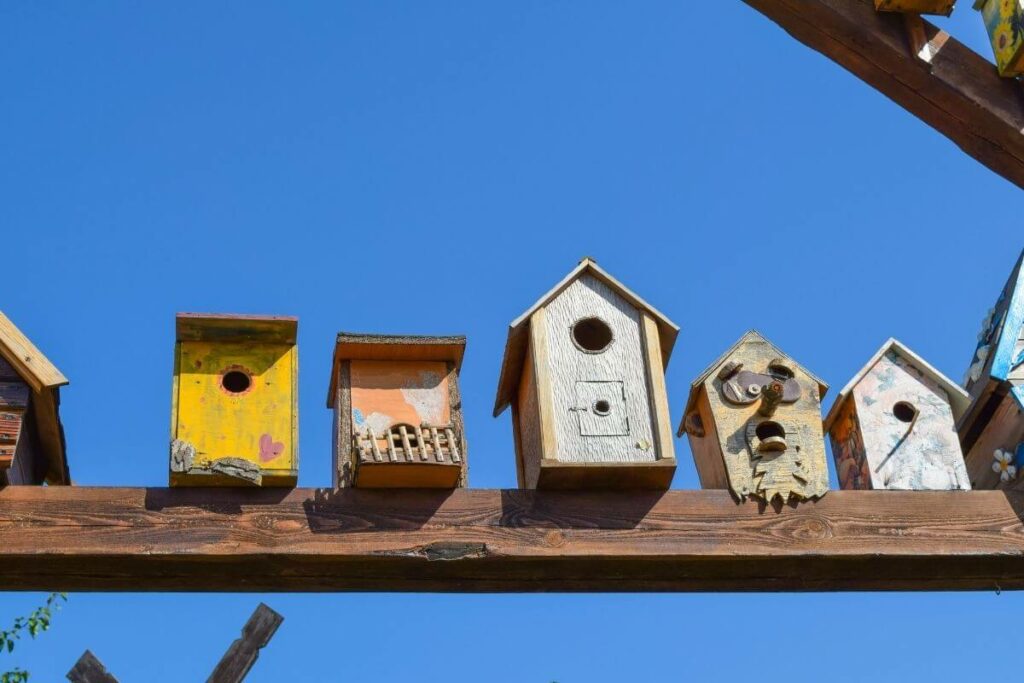
The hole must be at least 125 mm from the base of the nest box.
This will prevent predators such as cats from being able to reach in and harm the birds, and the parents will feel secure in the box.
Do not make the hole lower than this, or the babies may get injured.
If possible, you should roughen the wood beneath the hole, giving the babies more grip for when they need to climb out of the nest box.
Do not go very much over 125 mm from the base, or the baby birds may struggle to climb out.
A few birds, such as the blackbird and the pied flycatcher, need less depth:
- Blackbirds like 70 mm between the base and the hole
- While the pied flycatcher likes 90 mm
However, on the whole, a larger gap is safer for the chicks. If the gap is small, take extra care to keep the box out of reach of cats.
What Else Should I Think About When Building a Nest Box?
It’s a good idea to put some drainage holes in the nest box.
This will ensure that any dampness can run out, and as long as they are at the bottom, they won’t make the box significantly colder because no wind will be rushing through the holes.
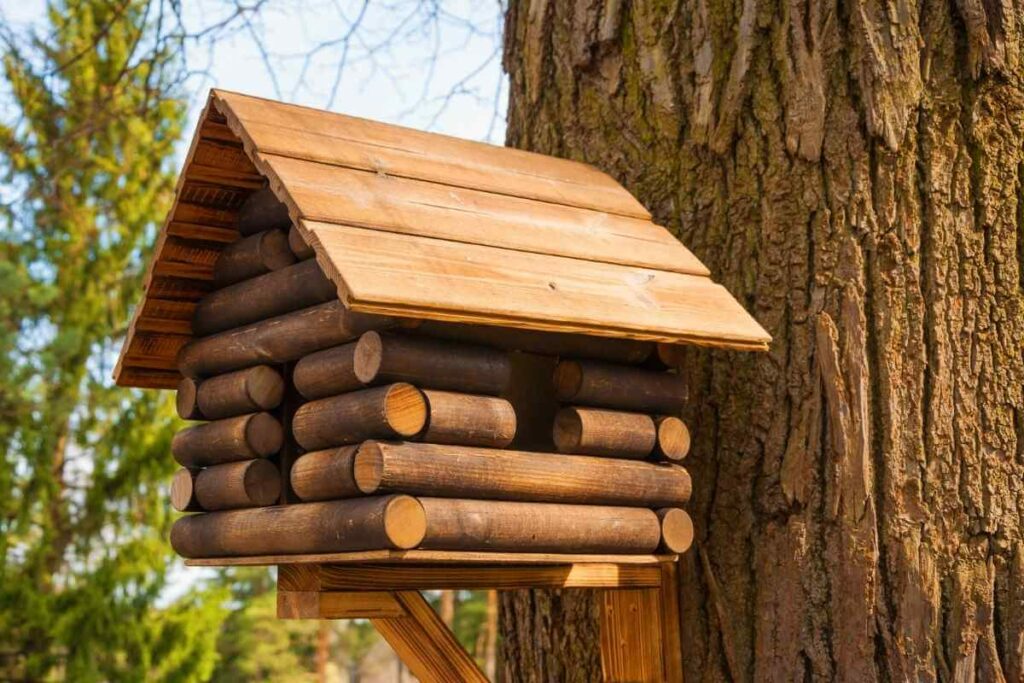
Without holes, a box may become humid and moldy, which is dangerous to birds.
You should avoid treating the wood if possible, but if it is going in a very wet place, consider using a leather cover or putting up a mini roof to divert water from it.
This should keep the nestlings snug and dry inside, and will help the nest box to last for longer, too.
It’s a good idea:
- to make a hinged door that allows you to open the nest box.
- Sometimes, you may need to remove dead chicks or leftover debris from the nest.
While parents will do their best to keep it clean and tidy, if an older chick dies, they may not be able to remove it themselves.
In the Wild: The chick would be eaten by a predator, but in an enclosed nest box, it will remain there until you remove it, so make sure you can do this.
Conclusion
Make sure your bird box is generous enough to fit the bird species that you wish to attract, and make the entry hole the right size for that kind of bird.
This will make the birds feel safe and increase the likelihood of the box being used year after year!
Always check on your box at the end of each season to ensure that it is still safe for birds to use the following year.
Replace worn string or broken wood, and take a box down if you think it isn’t safe to use, even if you cannot immediately replace it.
Also Helpful
- How to Make Bird Food With Oatmeal?
- Why Do Birds Throw Seeds Out of Feeders?
- How High Should a Bird Nest Box Be?
